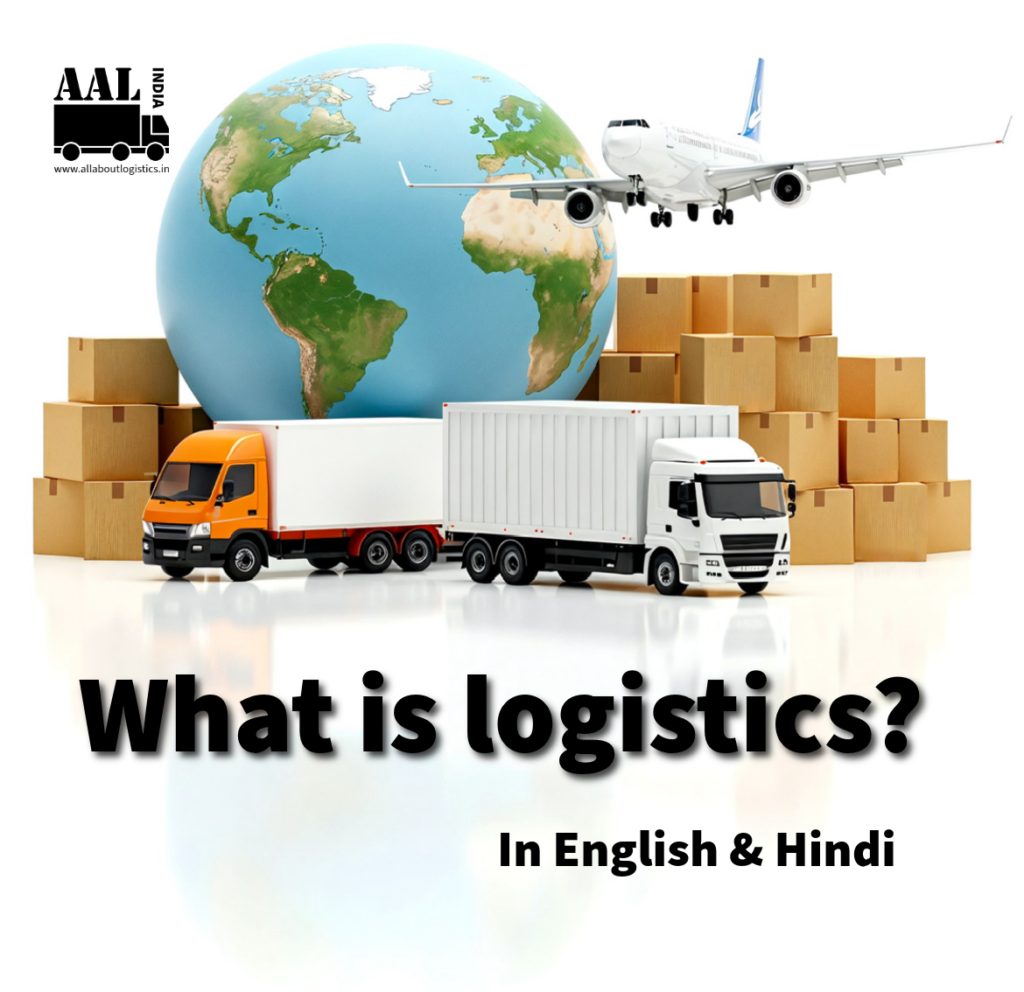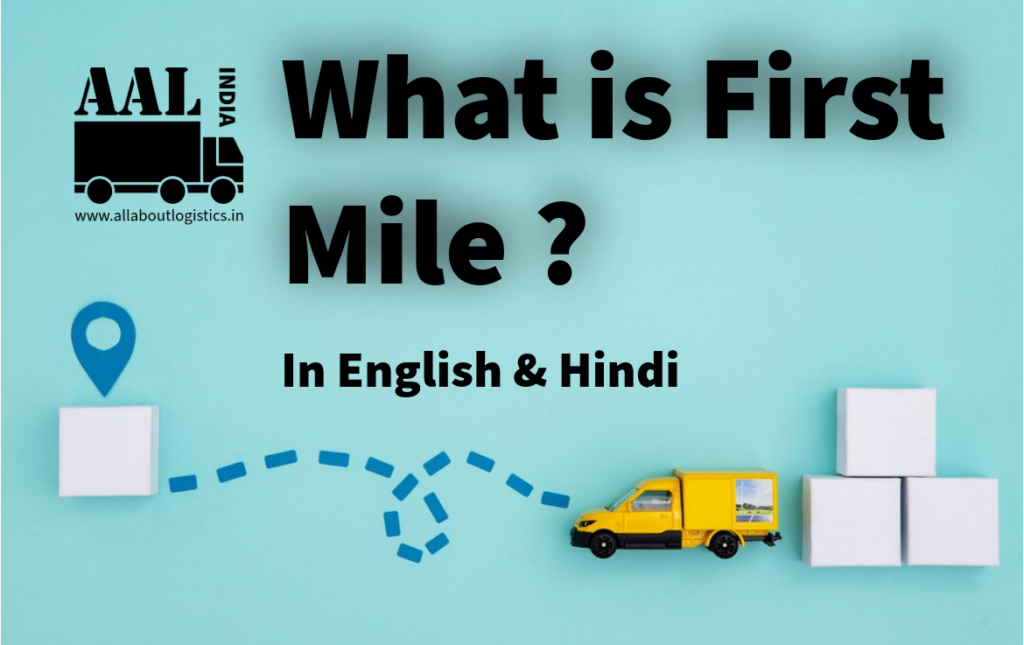Mid mile in logistics refers to the transport of goods from a central warehouse, supplier, or factory to regional distribution centers, fulfillment facilities, or local delivery stations. This stage connects the start and end of the supply chain and typically involves moving goods in bulk over longer distances using trucks, trains, or other bulk transport methods. The mid mile is essential because it directly affects delivery speed, inventory management, and overall logistics costs.
लॉजिस्टिक्स में मिड माइल का मतलब है माल को एक केंद्रीय गोदाम, सप्लायर, या फैक्ट्री से रीजनल डिस्ट्रीब्यूशन सेंटर्स, फुलफिलमेंट फैसिलिटी या लोकल डिलिवरी स्टेशन तक पहुंचाना। यह चरण सप्लाई चेन की शुरुआत और अंत को जोड़ता है और आमतौर पर सामान को भारी मात्रा में ट्रक, ट्रेन या अन्य बड़े वाहनों के जरिए लंबी दूरी तक पहुँचाया जाता है। मिड माइल बहुत जरूरी है क्योंकि इसी से डिलिवरी की स्पीड, इन्वेंट्री मैनेजमेंट और पूरी लॉजिस्टिक्स लागत पर असर पड़ता है ।
India’s mid mile logistics is the middle part of the journey that goods take as they travel from big storage locations to smaller centers closer to cities and towns before reaching customers’ doors. This part is vital for a country as big and diverse as India—where roads, cities, and different regions all have their own special needs and challenges.
भारत में मिड माइल लॉजिस्टिक्स उस सफर का बीच का हिस्सा है, जिसमें सामान बड़े गोदामों से निकलकर छोटे केंद्रों तक जाता है, जो कस्बों और शहरों के पास होते हैं। इसके बाद ही वे ग्राहक तक पहुंचते हैं। इतना बड़ा और रंग-बिरंगा देश होने के कारण भारत में यह हिस्सा बेहद जरूरी है, क्योंकि हर राज्य और इलाके की अपनी चुनौतियां होती हैं।
What is Indian Mid Mile?
Once companies store the goods in a main warehouse (say, in a city like Mumbai or at a port), their next step is to send those items in bigger trucks or trains to other centers—often in smaller towns and regional capitals. These centers then send the goods out in smaller loads to local shops or the final homes. The trip is carefully managed, as roads may have jams, weather can suddenly change, and the timing of deliveries matters for each step.
जब कम्पनी ने अपना सामान किसी बड़े वेयरहाउस (जैसे मुंबई या पोर्ट) में रखा हो, तो उनका अगला कदम है इन चीजों को बड़े ट्रकों या ट्रेनों से अन्य सेंटर्स (जो छोटे शहरों या क्षेत्रीय मुख्यालय में होते हैं) भेजना। फिर वहां से यह सामान छोटे-छोटे बैच में स्थानीय दुकानों या घरों में जाता है। इस यात्रा को बहुत सोच-समझकर किया जाता है, क्योंकि रास्ते में ट्रैफिक जाम, अचानक मौसम बदल जाना, और हर स्केल पर सही समय की डिलीवरी जरूरी है।
Exp 1 Online Shopping and Mid Mile Runs
Suppose a person in Guwahati buys a shirt online from Amazon or Flipkart. That shirt most likely starts its trip from a warehouse in south India (like Bengaluru or Hyderabad). The shirt travels across the country to Guwahati’s main center in a big truck. When it reaches Guwahati, it is stored, sorted, and finally moves by a delivery van to the customer’s area. The journey from Bengaluru to Guwahati covers the mid mile. If there is a delay in this step, the consumer doesn’t get their order on time.
अगर असम के गुवाहाटी में किसी ने अमेज़न या फ्लिपकार्ट पर शर्ट खरीदी है, तो वह शर्ट शायहद दक्षिण भारत (बेंगलुरु या हैदराबाद) के किसी बड़े गोदाम से निकलती है। यह शर्ट एक बड़े ट्रक में गुवाहाटी के मुख्य सेंटर पहुंचती है। यहाँ से फिर वे स्थानीय वैन में ग्राहक के घर जाती है। बेंगलुरु से गुवाहाटी तक का सफर मिड माइल कहलाएगा। अगर इसमें देरी हो जाए, तो ग्राहक को माल समय पर नहीं मिलेगा।
Exp 2 Cold Storage, Farms, and Freshness
Maharashtra’s grapes are famous all over India. These grapes are gathered from farms and first stored in a cool warehouse in Nashik. Next, they’re loaded onto refrigerated trucks and sent to larger storage centers in other big cities—maybe to Delhi or Kolkata. From there, they get distributed to local markets in various states. This center-to-center highway run is the mid mile, and it’s important for keeping the grapes fresh.
महाराष्ट्र के अंगूर देश भर में जाते हैं। नासिक के अंगूर पहले कोल्ड स्टोर में रखे जाते हैं, फिर फ्रिज वाले ट्रकों से बड़े शहरों के वेयरहाउस (जैसे दिल्ली या कोलकाता) भेजे जाते हैं। उसके बाद बचे हुए राज्य के स्थानीय बाजारों में बाटा जाता है। यह गोदाम से गोदाम के बीच हाइवे पर माल भेजना ही भारत में मिड माइल होता है, और इसी वजह से अंगूर ताजे रहते हैं।
Exp 3: North-East India’s Unique Needs
Think about products going to small towns in Arunachal Pradesh or Manipur. Goods from Delhi or Kolkata reach Guwahati by train, where they are kept in regional storage. Then, smaller trucks take these items through the hills to distant towns. Rain, landslides, and difficult roads—they all make the mid mile challenging in these areas.
अरुणाचल या मणिपुर के कस्बों में जा रहा माल अक्सर दिल्ली या कोलकाता से रेल द्वारा गुवाहाटी पहुँचता है। वहां से छोटे ट्रकों में यह पहाड़ी रास्तों से दूर-दराज इलाकों तक जाता है। बारिश, फिसलन, भूस्खलन—इन राज्यों में मिड माइल को मुश्किल बना देते हैं ।
Technology Making Mid Mile Better in India
Companies here now use tools like GPS to track trucks, computer software to schedule their runs, and online platforms to handle paperwork. If a truck breaks down in the middle of nowhere, the company gets a quick update and can send out a backup plan.
कंपनियों ने अब भारत में ट्रकों की निगरानी के लिए जीपीएस, रन शेड्यूल करने के लिए कंप्यूटर सॉफ्टवेयर, और ऑनलाइन पेपरवर्क के लिए भी टूल्स अपनाए हैं। अगर कोई ट्रक रास्ते में फंस जाए, तो तुरंत खबर मिल जाती है और जल्दी से समाधान निकल जाता है।
Sustainability and New Vehicles
E-commerce businesses and big stores are slowly switching to electric delivery vans, especially for city deliveries. This cuts the cost and pollution.
ई-कॉमर्स कंपनियाँ और बड़े स्टोर्स अब धीरे-धीरे शहरों में इलेक्ट्रिक डिलीवरी वैन का इस्तेमाल बढ़ा रहे हैं, जिससे खर्च भी घटता है और प्रदूषण भी कम होता है।[pv-magazine-india]
Pandemic and Intelligent Solutions
During COVID-19, logistics companies in India started renting trucks instead of owning them. Many hired local drivers and used online tracking to make sure the goods kept moving at the right speed. With the help of smart software, they could predict problems before they happened, like traffic jams or sudden demand for medicine.
कोविड के समय कंपनियों ने खुद के ट्रक खरीदने की बजाय किराये पर लिए, और छोटे ड्राइवरों को मोटिवेट किया। रीयल-टाइम ट्रैकिंग और स्मार्ट सॉफ्टवेयर से पहले ही पता चल जाता था कि कहाँ ट्रैफिक जाम होगा या दवा की डिमांड अचानक बढ़ेगी।
Why This Step is So Important
The mid mile links farms, factories, and import docks to all parts of the country. If this part fails, shops stand empty and the public never sees their goods. That’s why the companies who focus on this step—using good roads, fast vehicles, and clever scheduling—become the most successful.
मिड माइल ही गाँव, फैक्ट्री, और पोर्ट को देश के कोनों से जोड़ता है। अगर यह प्रणाली खराब हो जाए, तो दुकानें खाली रह जाती हैं। सही समय पर ट्रक और ट्रेनों का इस्तेमाल करके, और सब जगह तालमेल करके, कंपनियाँ जल्द पहुँचती हैं—और वही बेहतर मुनाफा कमाती हैं।
Top 10 Interview questions on Midmile with answers : मिडमाइल इंटरव्यू में पूछे जाने वाले सवाल :
1. What is mid mile logistics?
Mid mile logistics means moving goods from a main warehouse or factory to regional distribution centers before delivering to customers.
मिड माइल लॉजिस्टिक्स मतलब सामान को मुख्य गोदाम या फैक्ट्री से रीजनल डिस्ट्रीब्यूशन सेंटर तक पहुंचाना होता है, उसके बाद ग्राहक तक डिलीवरी होती है।
2. Why is mid mile important in supply chain?
It helps move large quantities efficiently between warehouses and local hubs, controlling costs and delivery time.
यह सप्लाई चेन में बड़े पैमाने पर माल को कुशलतापूर्वक गोदामों और स्थानीय हब्स तक पहुंचाने में मदद करता है, जिससे लागत और डिलीवरी समय नियंत्रित रहता है।
3. What transport modes are used in mid mile?
Trucks, trains, and sometimes air cargo are commonly used for mid mile transportation.
मिड माइल में ट्रक, ट्रेन और कभी-कभी हवाई मालवाहक का प्रयोग किया जाता है।
4. How does technology improve mid mile operations?
With GPS tracking, route planning, warehouse software, and real-time updates, logistics become faster and transparent.
जीपीएस ट्रैकिंग, रूट प्लानिंग, वेयरहाउस सॉफ्टवेयर और real time अपडेट से मिड माइल ऑपरेशन तेज और पारदर्शी बनते हैं।
5. What is shipment consolidation in mid mile?
Combining smaller shipments into one load reduces cost and improves transport efficiency.
छोटे शिपमेंट्स को मिलाकर एक साथ भेजने से लागत कम होती है और परिवहन में दक्षता बढ़ती है।
6. What challenges do mid mile logistics face?
Traffic jams, poor infrastructure, vehicle failures, and coordinating multiple shipments are common challenges.
ट्रैफिक जाम, खराब इन्फ्रास्ट्रक्चर, वाहन खराब होना और शिपमेंट का सही समन्वय मुख्य चुनौतियां हैं।
7. How to manage disruptions during mid mile?
Using backup routes, constant communication, and real-time tracking helps handle delays or breakdowns.
बैकअप रूट, लगातार संपर्क और रियल-टाइम ट्रैकिंग से देरी या खराबी को संभाला जा सकता है।
8, How does mid mile affect last mile delivery?
Proper mid mile delivery ensures goods reach local hubs on time, enabling quick and accurate last mile delivery.
सही समय पर मिड माइल डिलीवरी से सामान स्थानीय हब्स तक पहुंचता है, जिससे अंतिम माइल डिलीवरी सटीक और तेज होती है।
9. Can you name an Indian company excelling in mid mile logistics?
Companies like Flipkart and Mahindra Logistics efficiently manage mid mile operations across India.
फ्लिपकार्ट और महिंद्रा लॉजिस्टिक्स जैसी कंपनियां भारत में मिड माइल ऑपरेशन अच्छी तरह संभालती हैं।
10. What is the difference between urban and rural mid mile logistics?
Urban areas have better roads and infrastructure; rural areas face tough terrains and connectivity issues.
शहरी क्षेत्रों में बेहतर सड़क और सुविधा होती है; ग्रामीण क्षेत्रों में कठिन रास्ते और कनेक्टिविटी की समस्या होती है।
उम्मीद करता हूँ , मिड माइल (mid mile kya hota hai ? ) अब सबको समझ में आ गया होगा । और भी लोजिस्टिक्स पोस्ट्स पढ़ने के लिए वेबसाइट को स्क्रॉल कर सकते हैं ।


